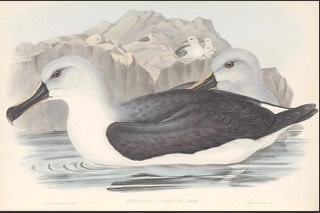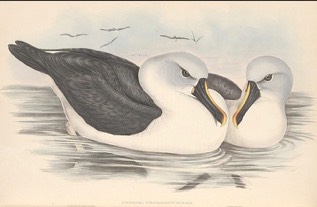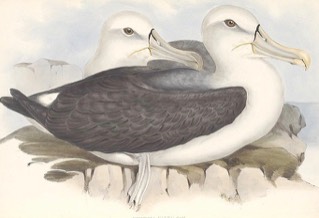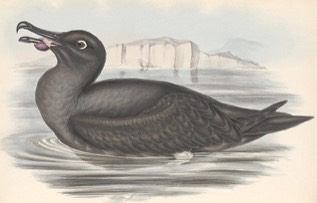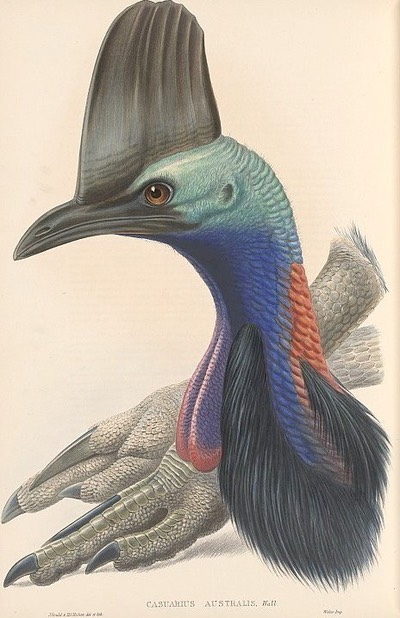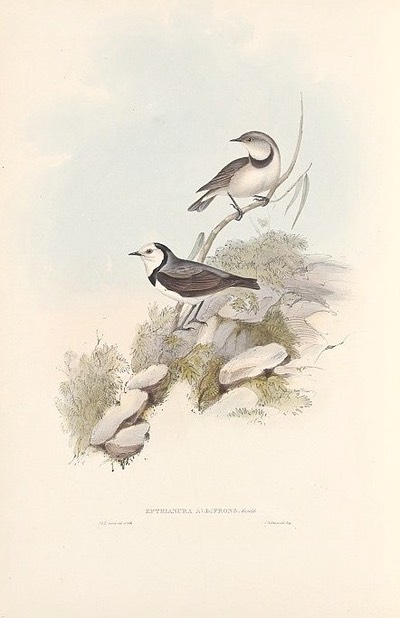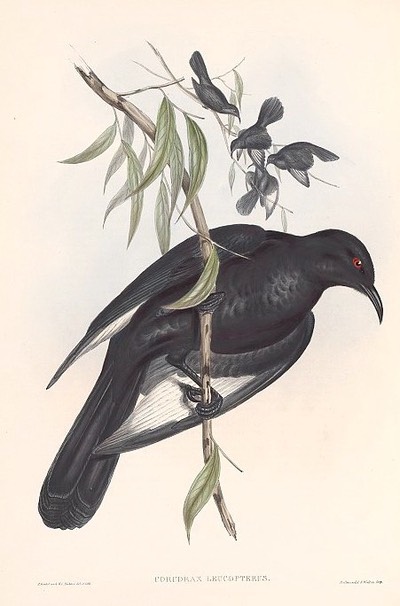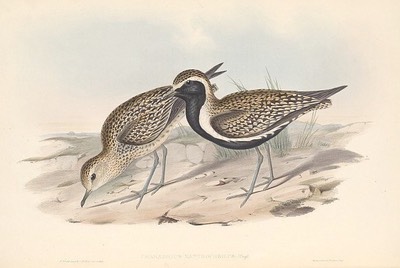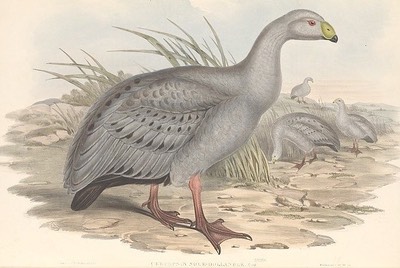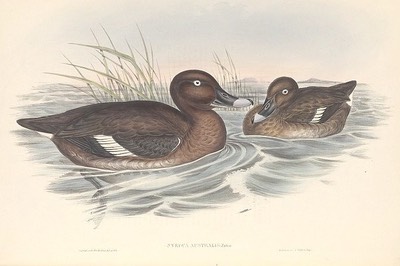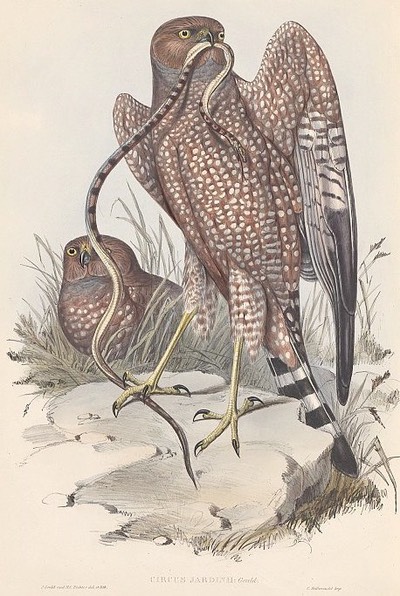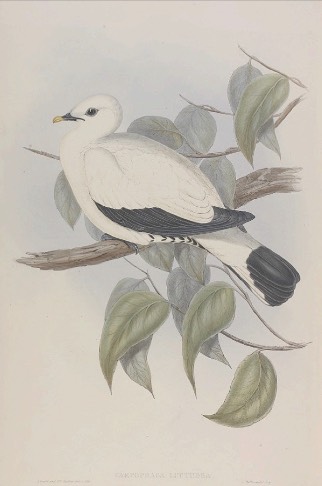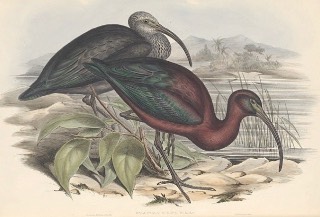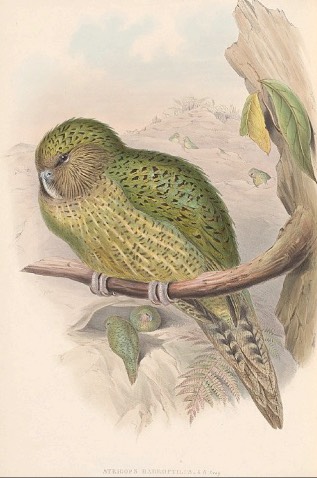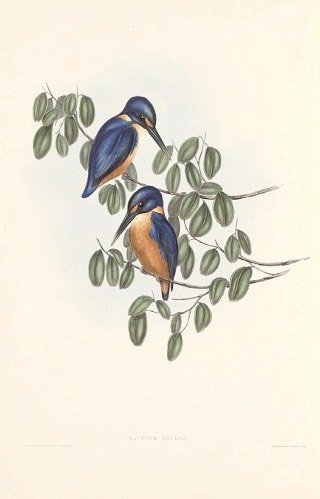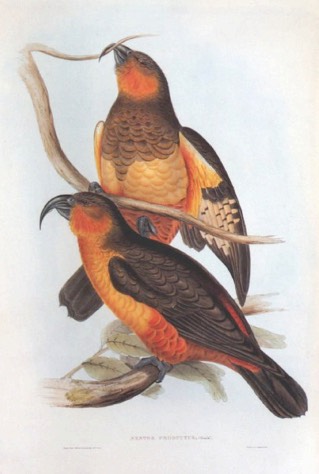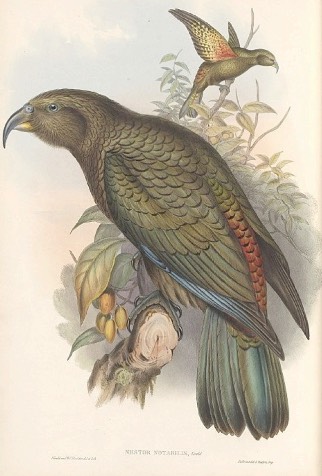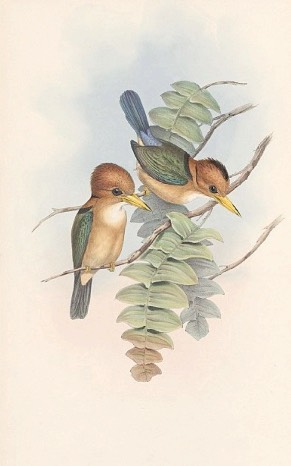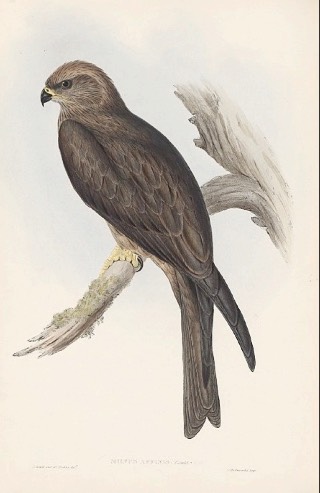This is a summary of a trip to Queensland that my son Jon and I took in the latter part of the last century. This trip was captured in a 5-part video which is provided below.
A small video portfolio entitled The Birds of Australia has video of individual species extracted from the videos below. A photo gallery entitled The Birds of Australia has photographs of a number of species recorded in Queensland.
Volumes 1 & 2 of Birding the Tropical North (embedded above) include the following species; Golden-headed Cisticola, Little Pied Cormorant, White-browed Crake, Torresian Crow, White-bellied Cuckoo-Shrike, Black-fronted Dotterel, Bar-shouldered Dove, Peaceful Dove, Spangled Drongo, Great Egret, Intermediate Egret, Little Egret, Red-backed Fairy-Wren, Grey Fantail, Crimson Finch, Helmeted Friarbird, Striated Heron, White-faced Heron, White-necked Heron, Brown Honeyeater, White-naped Honeyeater, Australian White Ibis, Nankeen Kestrel, Forest Kingfisher, Black Kite, Laughing Kookaburra, Masked Lapwing, Rainbow Lorikeet, Scaly-breasted Lorikeet, Australian Magpie, Magpie-lark, Chestnut-breasted Mannikin, Spectacled Monarch, Common Myna, Nankeen Night-Heron, Pale-yellow Robin, White-bellied Sea-Eagle, Bower’s Shrike-Thrush, Royal Spoonbill, Yellow-billed Spoonbill, Black-winged Stilt, Bush Stone-Curlew, Black-necked Stork, Welcome Swallow, Purple Swamphen, Varied Triller, Spotted Turtle-Dove, Willie Wagtail, Rufous Whistler, Wandering Whistling-Duck, White-breasted Woodswallow, Helmeted Friarbird, Osprey, Australian White Ibis, Australian Raven, Pheasant Coucal, Spangled Drongo, Mangrove Kingfisher, Pied Butcherbird, Unadorned Rock-Wallaby, Common Brushtail Possum, Orange-footed Scrubfowl, Pied Currawong, Koala, Restless Flycatcher, Brahminy Kite, Black Kite, Silver Gull, Rainbow Lorikeet, Bush Stone-Curlew, Laughing Kookaburra, Sulphur-crested Cockatoo, Welcome Swallow, Wedge-tailed Eagle, Grey-crowned Babbler, Apostlebird, Red-backed Fairy-Wren, Australian Magpie, Blue-faced Honeyeater, Pale-headed Rosella, Black-necked Stork, White-faced Heron, Little Pied Cormorant, Darter, Australasian Grebe, Australian Pelican, Great Crested Grebe, Whistling Kite, Grey Teal, Little Friarbird, Magpie-Lark, Grey Butcherbird, Dromedary Camel, Double-barred Finch, Squatter Pigeon, Black-faced Woodswallow, Brown Falcon, Galah, Australian Bustard, Black Swan, Crested Pigeon, Little Crow, and Yellow-throated Miner. Volume two is embedded below. If you would like to view these volumes on Vimeo instead of the embedded files shown here, please link to; Queensland - Birding the Tropical North - Volume 1 and/or to Queensland-Birding the Tropical North - Volume 2.
Volumes 3 & 4 of Birding the Tropical North include the following species; Emu, Australian Bustard, Brolga, Red Kangaroo, Galah, Zebra Finch, Australian Pratincole, Diamond Dove, Black Kite, Apostlebird, Black-faced Woodswallow, Willie Wagtail, Masked Woodswallow, Black-faced Cuckoo-Shrike, Yellow-throated Miner, Blue-faced Honeyeater, Little Corella, Pied Butcherbird, Little Crow, Australian Magpie, Sulphur-crested Cockatoo, Crested Pigeon, Squatter Pigeon, Red-backed Kingfisher, Brown Honeyeater, Rainbow Bee-Eater, Pied Currawong, Straw-necked Ibis, Noisy Friarbird, Wandering Whistling-Duck, Pacific Black Duck, White-throated Honeyeater, Grey Fantail, Jacky Winter, Leaden Flycatcher, Little Friarbird, Whiptail Wallaby, Rainbow Lorikeet, Scaly-breasted Lorikeet, Black Butcherbird, Laughing Kookaburra, Bower’s Shrike-Thrush, Spectacled Monarch, Spotted Catbird, Golden Whistler, Victoria’s Riflebird, MacLeay’s Honeyeater, Australian Brush-Turkey, Red-browed Finch, Grey-headed Robin, Atherton Scrubwren, Crimson Rosella, Australian King Parrot, Darter, Pacific Black Duck, Dusky Moorlhen, Australian Brush Turkey, Silvereye, Welcome Swallow, Australian Pelican, Great Egret, Intermediate Egret, Cattle Egret, Pied Cormorant, Little Pied Cormorant, Little Black Cormorant, Magpie-Goose, Buff-banded Rail, Plumed Whistling-Duck, Sulphur-crested Cockatoo, Laughing Kookaburra, Australasian Grebe, Sarus Crane, Black-faced Cuckoo-Shrike, Pale-headed Rosella, Noisy Miner, Godman’s Rock-Wallaby, Great Bowerbird, Figbird, Squatter Pigeon, Magpie-Lark, Green Pygmy-Goose, Comb-crested Jacana, Sacred Kingfisher, Beach Stone-Curlew, Bar-shouldered Dove, Whimbrel, Masked Lapwing, Silver Gull, Gull-billed Tern, Papuan Frogmouth, Estuarine Crocodile, Wompoo Fruit-Dove, White-faced Heron, Azure Kingfisher, Shining Flycatcher, Forest Kingfisher, Little Kingfisher, Spotted Turtle-Dove, Orange-footed Scrubfowl, MacLeay’s Honeyeater, Victoria’s Riflebird, Emerald Dove, Yellow-spotted Honeyeater, Peaceful Dove, Grey-headed Robin, Lesser Sooty-Owl, Ringtailed Possum, Pale-yellow Robin, Grey Shrike-Thrush, Tropical Scrubwren, Spotted Catbird, Olive-backed Oriole, Chestnut-breasted Mannikin, and Willie Wagtail. If you would rather watch these videos on Vimeo, rather than then embedded files below, please follow these links; Queensland - Birding the Tropical North - Volume 3 and/or Queensland - Birding the Tropical North - Volume 4.
Volume 5 of Birding the Tropical North include the following species; Southern Cassowary, Emerald Dove, Blue-faced Honeyeater, MacLeay’s Honeyeater, Olive-backed Oriole, Bar-shouldered Dove, Yellow-spotted Honeyeater, Purple Swamphen, Figbird, Bridled Honeyeater, White-cheeked Honeyeater, Dusky Honeyeater, Graceful Honeyeater, Lewin’s Honeyeater, Magpie-Lark, Great Bowerbird, Grey Fantail, Victoria’s Riflebird, Forest Kingfisher, Brown Cuckoo-Dove, Spectacled Monarch, Comb-crested Jacana, Azure Kingfisher, Red-tailed Black-Cockatoo, Nankeen Kestrel, Darter, Little Pied Cormorant, Torresian Crow, Spotted Catbird, Black Butcherbird, Helmeted Friarbird, Musky Rat-Kangaroo, Pale-yellow Robin, and Australian Brush-Turkey. If you would rather watch this video on Vimeo, rather than the movie embedded below, please follow this link - Queensland - Birding the Tropical North - Volume 5.
BASIL
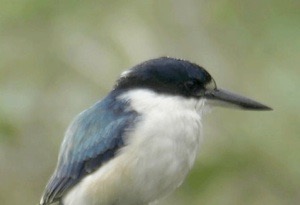
One morning Jon and I were videotaping Kingfishers and Honeyeaters. (A videograb of a Forest Kingfisher is shown to the right and a Honeyeater just below that.) It was the North American summer and we were in the Australian winter, in tee-shirts. We had stopped at a gas station and roadside restaurant as we head south toward Magnetic Island in Queensland.
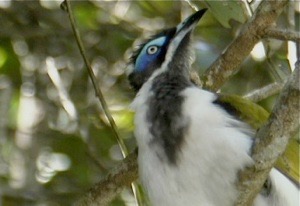
We decided to have some of those wonderful Queensland hamburgers on which they pile everything imaginable. The ones which we had here had the standards - meat, tomatoes, onions, beets, etc. and basil, lots of fresh basil. I asked the owner where she got the basil (which she pronounced with a soft ‘a’ and I pronounced with a hard ‘a’) and she said it was off the bush in back. “Bush in back?” I asked, I had never heard basil and bush in the same breath and figured this was simply a robust plant and a bit of overstatement. After some additional inquiry we were all off to the backyard where there was a basil bush as high as my chest - seems they are perennial in Queensland - year-round basil (with a soft ‘a’), far out, this is a neat place.
ROAD TRAINS
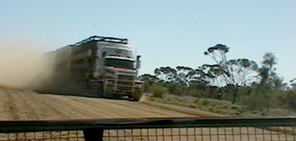
As we prepared for our Australia trip one of the non-birding events which we wanted to experience was seeing a road train. A number of the major highways in Australia are not sealed. Trucks pulling many trailers (Road Trains -- the one to the right only has three trailers) roar along these dirt roads in a swarm of dust and gravel. There is little elevation change along these routes so a truck, once it gains speed, is able to efficiently pull a number of trailers. That dynamic means, among other things, that they do not like to slow down or swerve.
We met a number of road trains in our travels about Queensland. We would see them coming a long way away, an approaching dust storm on the highway. As we got closer we would pull off to the left and wait for them to pass. A few minutes later the dust would settle enough for us to see and we would be on our way again.

The maelstrom of dust and stone was everything we had hoped for —
ATHERTON
When we were in Atherton we stopped at a bakery to buy delicious goodies for our breakfast, the owner of the bakery was an exceedingly beautiful woman -- my son quipped in an amused manner as we left - “I thought you were going to buy one of everything.” I said: “She was the prettiest baker I have ever seen.” Looking into the bag of goodies my son said, “Yeah, it was great.”
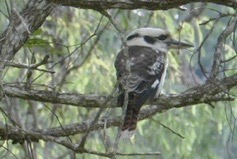
Later in the month we stopped at a cafe along the road. There was something on the menu, I do not recall what, that I did not know. As we were waiting to order the owner had a telephone call telling him that a tour bus was going to be stopping in. We asked for the unknown food stuff -- along with more known edibles. The owner replied that we could not have any because a tour bus was coming. “Okay, but what is it”. Waving his hand he said you can’t have it “a bus is coming.” We went off to the patio with our hamburgers (Australian hamburgers are, I think, the best in the world) to watch the crowd from the bus and wonder what the mysterious edible could be...and I still do not know.
This is the land of Kookaburras — for those who may be familiar with the song by Marion Sinclair but not with the bird, a couple of photos for your viewing pleasure.
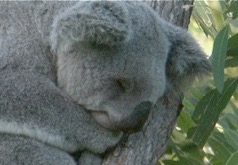
Kookaburra Kookaburra sits on the old gum tree
merry merry king of the bush is he
Laugh Kookaburra, laugh Kookaburra
Gay your life must be
Kookaburra sits on the old gum tree
Eating all the gumdrops he can see
Stop Kookaburra, stop Kookaburra
Leave some gums for me
Kookaburra sits on the old gum tree
Counting all the monkeys he can see
Stop Kookaburra, stop Kookaburra
That's no monkey, that's me!
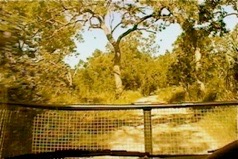
And let us not forget Koalas. Ask non-birders what they think of when you mention Australia and a number of them will respond with “Koala”. Finding a Koala is pretty exciting - not that they move much though. Ask a birder what they think if when you mention Australia and they are likely to respond with “Parrots” or “Cassowary”. And they are truly exotic and memorable.
For me, some of my most vivid memories are of traveling down narrow tracks and thousands of termite mounds. The tracks are often quite passable and the termite mounds can be enormous and hard.
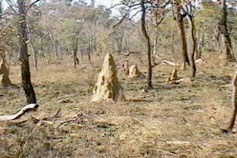
GOULDIAN FINCH
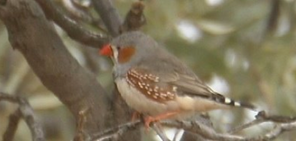
Queensland, Australia abounds with finches - like the Zebra Finch (right) which I videotaped as part of the effort which became “Birding The Tropical North - Queensland”, see videos above.

Another of the finches from the Australasian region is the Gouldian Finch. Gouldian Finches are polymorphic - the plumage on their heads may be red, yellow, or black. The results of a study published in 2009 shed a great deal of light on the breeding behavior of this species - and most likely some insight on how new species form. Both males and females strongly prefer mates with the same colored head. Genetic incompatibilities lead to higher pre-hatch mortality when birds with differing colored heads breed.
A more recent study, this one on Zebra Finches, indicates that the genes of that species which are associated with courtship in the left side of the brain are activated immediately and intensely when the bird sees a potential mate through its right eye. The corollary, genes in the right side of the brain being activated when the bird sees a potential mate through its left eye does not happen or happens at much lower and much less intense levels. (“In the Eye of the Beholder: Visual Mate Choice Lateralization in a Polymorphic Songbird” by Jennifer Templeton and James Mountjoy both of Knox College - Royal Society Publishing, Biology Letters, rsbl20120830, October 3, 2012)
Birds lack the region of the brain which in mammals increases the communication between the two brain hemispheres (the corpus callosum). The conclusion of the study, that in Zebra Finches mate selection occurs through lateralisation, supports a similar conclusion for other bird species based on observational studies. For example, studies of many courtship displays of the Red-capped Manakin note that males tend to display more when they see a female from one eye versus the other. This species has a particularly impressive display, involving side to side movements and males tend to see a female from one eye versus the other. It is not known if the right eye phenomenon found in the Zebra Finch is the same for all other species (right vs. left or the corresponding energization of courtship genes in the left or right hemispheres of the brain).
And a side note, the Gouldian Finch is found sporadically across the northern tier of Queensland (and is in significant decline because of the loss of habitat). It is named for Elizabeth Gould who drew many of the images which appeared in John Gould’s, Birds of Australia (1848) - the plate for the Gouldian Finch in that work is shown to the right.
SOUTHERN CASSOWARY
The Cassowary is only ten feet away, I am having trouble getting something besides its head in the camera frame. Huge, primitive looking, big feet, big claws, remembering stories about staying away from them because they can split you open. It is seeing its reflection on the camera lens and is walking closer. Keep the tripod and camera between you and the bird I think, checkout the door to the house, sacrifice the camera if it comes down to it (I can always dig out the tape).
What an incredible experience. The Cassowary House in Queensland, Australia has had Cassowary coming to the house every day for two decades. Big birds bringing generation after generation of smaller birds to the house. I’ve been waiting all day, with nothing to do but video assorted Riflebirds and Catbirds (something that birders travel thousands of miles to do), finally here it is and it is wonderful. The adrenaline is pumping and I am wishing that my son was here to see this.
Jon is off with the son of the owners to ride a tram down the mountain, having fun with someone his own age. We have been welcomed into their home and had the honor of sharing a family celebration and great food. This is a great experience, the perfect way to end this trip to Australia. We have shot lots of tape on this trip, everything from Frogmouths to Cockatoos, great birds and friendly people. As we traveled through the Atherton Tablelands my son had asked what kind of job could he have if he lived here, funny - I was wondering the same thing.
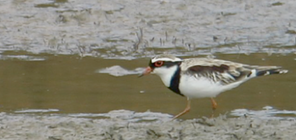
THE OUTBACK
The track keeps getting worse, seems unlikely, but it is happening. It is June in Queensland. This is our (my son, Jon, and I) second day on a red clay road that is sometimes not as wide as the camper. We are in the outback traveling somewhere near the Great Basalt Wall. Last night we camped by a lake and woke to the sounds of a multitude of exotic birds. While brewing tea we watched kangaroos and cockatoos -- pretty darn cool.

Now the track, which has been two narrow ruts cutting across the grassland, has turned wet - the track is a mass of mud. Off we go, mud flying, sliding this way and that but generally in the direction we wish to go. After an hour we find a bit of dry ground from which some Aussies, in a Toyota flatbed truck, have been watching our progress. We stop and chat, the look in their eyes is friendly, bemused, and if not tempered with a smidgen of amazement would break into laughter.
“Is this the way to Pentland?” I ask.
One of them looks across the grass and seemingly through the trees and says, “Yes.”
“Will we be able to get there?” I ask smiling and shrugging toward the camper.
The same Aussie looks back across the grassland and mud through which we have come. Smiles, and says “Probably” with some affirmative nodding.
Jon and I climb back into the camper and off we go.
THOUGHTS ABOUT EXTINCTION
I was reading an essay by Stephen Jay Gould, “The Power of Narrative”, in which he notes:
Extinction is truly forever; once a group dies out, the hundred thousand unpredictable states that led to its origin will never be repeated in precisely the same way.
Think of the myriad branches of life which produced birds as different as the Black-fronted Dotterel and the Black-necked Stork (right) -- and allowed them to occupy the same space, separated only by the shortest of moments.

